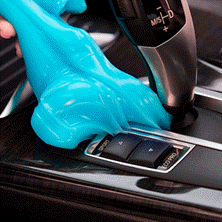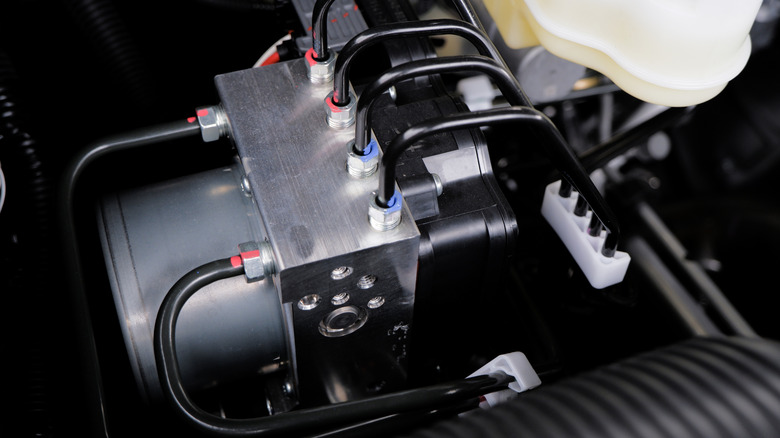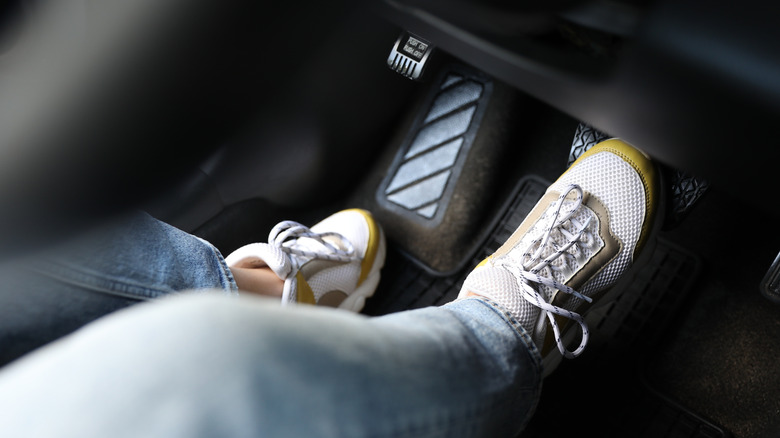staff@slashgear.com (Edward Munene)
2025-08-13 12:45:00
www.slashgear.com
Most people may not know it, but in many modern cars, the brakes aren’t actually connected the way they used to be. Nowadays, pressing the pedal doesn’t always mean you’re pushing brake fluid through a brake line anymore, especially if you’re driving a hybrid or an EV. You could be just sending a signal. This time round, there’s a wire, not a brake line. The pedal’s got sensors, which send information — about how hard you pressed the pedal — to a computer, which then tells the brakes what to do. That’s it. No hydraulics. No fluid of any kind. Just software and electronics doing what has long been mechanical.
Does it feel different? More often than not, no. A brake-by-wire system still feels like normal brakes, and that’s because the pedal is designed to push back a bit so it feels familiar. In reality, though, it’s more of an act. Underneath, it’s a totally different system called a brake-by-wire. It’s lighter, it reacts faster, and it works seamlessly with all the new tech that cars use these days like ABS, traction control, emergency braking, and so on. Brake-by-wire lets all these systems work in tandem with the brakes almost instantly, far quicker than traditional fluid setups ever could.
However, this is where things get mushy. When it fails, it fails differently. You won’t get the spongy pedal or a slow leak along the lines. It just cuts out, and that’s what makes people nervous — understandably.
How brake-by-wire works
When you hit the brake pedal in a brake-by-wire car, it’s not going to send fluid flowing down to the calipers. Instead, there are sensors that pick up how hard, how fast, and how far you pressed the pedal. That data is then sent to the ECU, which then decides how much braking force each wheel needs, something Bosch confirms is standard in most of its wire-based systems.
To make the pedal comfortable or at least familiar, manufacturers usually include a motor or spring in the pedal to give you some force feedback. Once the computer gets your input, it sends out signals to either electric actuators, or in some cases an electrohydraulic pump. This unit then applies the brakes to each wheel in a sealed loop, all without the need for any mechanical link. The computer controls each wheel independently, modulating braking force based on speed, grip, load, and stability. It all sounds like new tech, but this invention has been around since 2005, meaning you could be driving a brake-by-wire car without even realizing it.
It gets even better in hybrids and EVs with regenerative braking, which lets the motor itself slows the car down first, before involving the actual brakes. This saves your pads and rotors, especially if seamlessly coordinated with friction braking. Press the pedal, and you’ll feel the braking force, but sometimes the discs don’t even engage at all.
What happens when it fails
When a brake-by-wire system chooses to disappoint, it doesn’t give you much warning, and that is the catch. Unlike with traditional hydraulics, there’s no sound, no leak, no warning light. Just little to non-existent braking force, which isn’t something you’d want when you’re approaching city traffic or gliding down a slope. Luckily, some cars have a backup system that kicks in,usually in the form of old-school hydraulics, but not all do. If yours doesn’t, you’re only left to rely on limited electrical redundancy, and that is if there’s any at all.
In fact, Volvo just recalled over 1400 Volvo EVs and PHEVs in 2025 due to a problem with the brake control module. The company issued a warning about the possibility of abrupt loss of braking ability, a stark reminder that electronic malfunctions may lead to complete brake failure without warning.
The sensors fail too at times, with several drivers claiming not to get any response after hitting the pedal. The system is not immune to software bugs or power issues, either, and even a short blip in the electronics can shut the whole thing down, but that’s not all. Any fault with a brake-by-wire system, no matter how small you think it is, has no quick fix. There’s no brake fluid to top up or a cable to adjust. Everything is hidden in code, and in the event this code fails, the only option is to involve the pros or the dealership.

PULIDIKI Car Cleaning Gel Universal Detailing Kit
Make car cleaning effortless with the PULIDIKI Car Cleaning Gel Universal Detailing Kit, a simple yet effective solution for keeping your vehicle spotless. With over 89,741 ratings and an impressive 4.1-star average, it’s no wonder this kit is a highly rated Amazon Best Seller.
Loved by over 40,000 buyers in just the past month, it’s an unbeatable deal for only $6.99. Perfect for cleaning those hard-to-reach areas, this detailing gel is a must-have for car enthusiasts. Order now for just $6.99 at Amazon!
Help Power Techcratic’s Future – Scan To Support
If Techcratic’s content and insights have helped you, consider giving back by supporting the platform with crypto. Every contribution makes a difference, whether it’s for high-quality content, server maintenance, or future updates. Techcratic is constantly evolving, and your support helps drive that progress.
As a solo operator who wears all the hats, creating content, managing the tech, and running the site, your support allows me to stay focused on delivering valuable resources. Your support keeps everything running smoothly and enables me to continue creating the content you love. I’m deeply grateful for your support, it truly means the world to me! Thank you!
|
BITCOIN
bc1qlszw7elx2qahjwvaryh0tkgg8y68enw30gpvge Scan the QR code with your crypto wallet app |
|
DOGECOIN
D64GwvvYQxFXYyan3oQCrmWfidf6T3JpBA Scan the QR code with your crypto wallet app |
|
ETHEREUM
0xe9BC980DF3d985730dA827996B43E4A62CCBAA7a Scan the QR code with your crypto wallet app |
Please read the Privacy and Security Disclaimer on how Techcratic handles your support.
Disclaimer: As an Amazon Associate, Techcratic may earn from qualifying purchases.










































































































